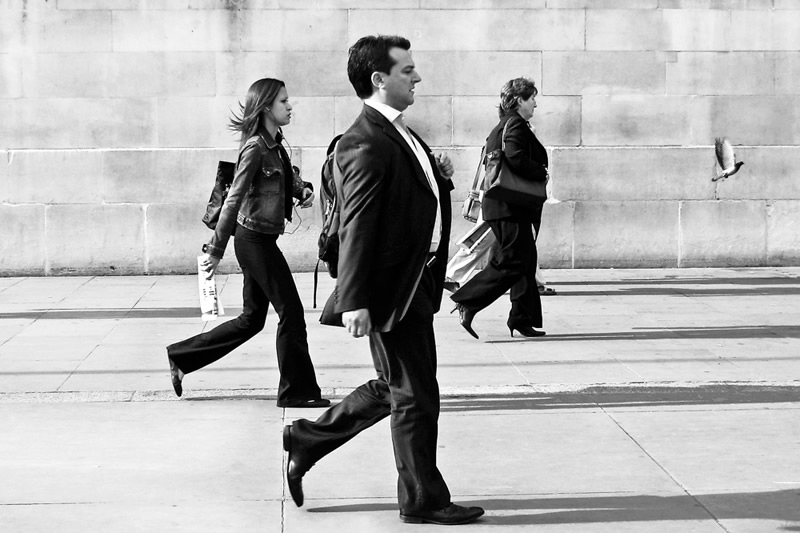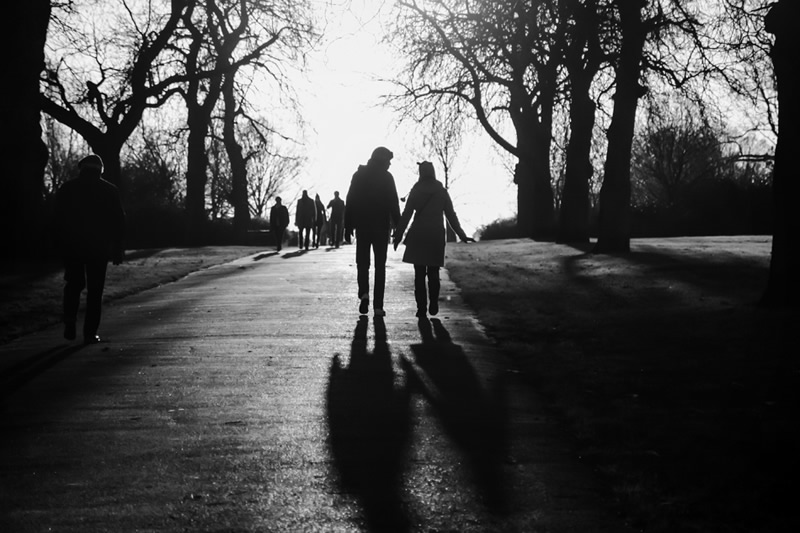Ronya Galka is a German street photographer who focuses on London within nearly all of her work. Visiting London as a young child, she knew that she wanted to live in English capital, due to its diverse culture and buzzing streets. Two decades later, Galka now resides in London; once working as a marketing manager, she now focuses solely on her successful street photography profession. Galka’s love for street photography originates from observing people and to ‘celebrate their individuality’ (Gönen, Chowdary and Chowdhury, 2019); not referring to herself as a photo-journalist, Galka considers herself to be story teller, using her photos as a way to portray the endless unplanned moments which occur within London. Her images are candid and also reflect Galka’s emotions and expressions within the time of which the moment is captured. Having left a world of corporal management to focus on photography, her series Rat Race features a set of images focusing on the mundane daily routine of London workers, of which she strongly relates to; one of the main occurring themes within her work is the clear presence of human emotion, from the love of a couple cuddling in Trafalgar Square to the solitude of a café worker glancing out of her store window, emotions which we can all relate to.
Galka’s use of equipment is a key contribution for her images to be so intimate. Starting off with a Sony Cybershot point and shoot, she used the small camera to get up close to her subjects and by catching a minimal amount of attention. The use of shooting with the Cybershot meant she could shoot in varied ways, such as from the chest, viewfinder or hip, to capture a varied amount of perspectives. Once she became confident in shooting within the streets, she started shooting with a Canon 5D MK III but due to the size of the DSLR, it becomes very obvious to subjects that you are taking photos of them, as I have found when using the camera in my own work. As of this, she decided to return back to more compact cameras which include the Ricoh GX200 and Fujifilm X100. The functionality of these compact cameras means that Galka can travel on foot for long periods of time without any added discomfort from a heavy set-up. A simple system also means that the photographer can spend more time focusing on the subject, composition and lighting without spending too much time setting up the camera.
Galka’s images use a series of similar compositions and use of light to create an eye capturing moment frozen in time. Within her images, Galka often positions her main subject within the middle of the frame, often using the rule of thirds to her advantage. Adding to use of composition, Galka’s photos nearly always feature shadows, caused by the images being shot in strongly lit environments and when the sun is low in the sky, resulting in long dark shadows connecting to the images subject. Galka’s images use a fast shutter speed, capturing the fast-paced environment of London, and a small aperture to give the main subject within the frame context for the viewer. The use of black and white is the main reason why I find Galka a relevant photographer to look into; our work seems to hold a similar black and white theme and also a similar use of strong contrast.
Gönen, M., Chowdary, I. and Chowdhury, M. (2019). Ronya Galka – A Passionate Contemporary Street Photographer From London. 121clicks.com. Available at: https://121clicks.com/showcases/ronya-galka-a-passionate-contemporary-street-photographer-from-london (Accessed 2 Nov. 2019).

















